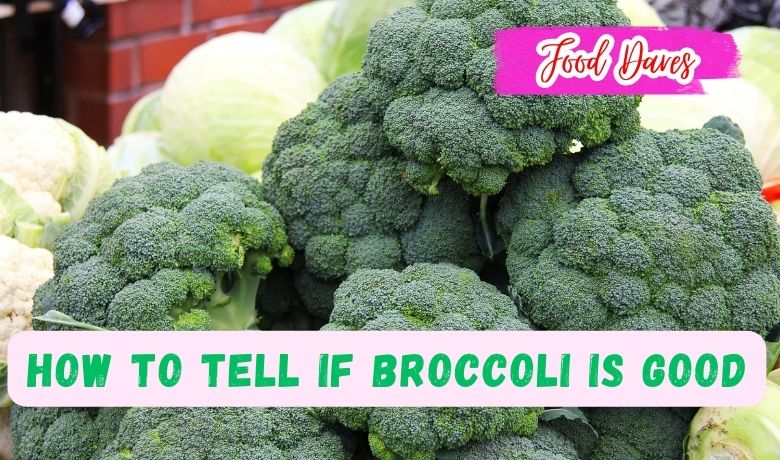Broccoli, with its vibrant green color and unique appearance, has long been recognized as a nutritious vegetable that offers numerous health benefits. Whether steamed, roasted, or added to salads and stir-fries, broccoli is a versatile ingredient that can be enjoyed in various culinary creations. However, to fully reap the rewards of this cruciferous vegetable, it is essential to ensure that the broccoli you consume is fresh and of high quality.
Understanding how to assess the freshness of broccoli is crucial in maintaining its flavor, texture, and nutritional value. By being able to identify the signs of good broccoli, you can make informed choices and incorporate this nutritious vegetable into your meals with confidence.
In this article, we will delve into the essential factors that determine whether broccoli is good or bad. We will explore visual indicators such as color and texture, the importance of the smell test, and how to detect the presence of mold. By familiarizing yourself with these key factors, you will be equipped with the knowledge needed to select and enjoy the freshest broccoli available.
So, let’s dive into the world of broccoli freshness and learn how to tell if broccoli is good.
Visual Indicators of Freshness
When determining the freshness of broccoli, visual cues play a vital role. One of the primary indicators of freshness is the vibrant green color of the broccoli florets. Look for broccoli with crisp, bright green florets, as discoloration such as yellowing or browning can signify aging and potential deterioration. Additionally, examine the stalks for firmness and avoid broccoli with soft or mushy spots. Fresh broccoli should have a vibrant appearance, with no signs of wilting or drooping. By paying attention to these visual indicators, you can ensure that you select the freshest and most flavorful broccoli for your culinary endeavors.
Smell Test
The sense of smell can provide valuable insight into the freshness of broccoli. When assessing broccoli, take a moment to inhale its aroma. Fresh broccoli should have a mild, slightly earthy scent. However, if you detect any strong or unpleasant odors, it could be an indication that the broccoli has started to spoil. A foul smell may suggest the presence of bacteria or other microorganisms. Trust your senses and avoid consuming broccoli with an off or pungent smell. By conducting a simple smell test, you can further ensure that the broccoli you choose is of the highest quality and fit for consumption.
Texture Assessment
The texture of broccoli is another important factor in determining its freshness. When assessing broccoli, pay attention to its texture, as it can provide valuable clues about its quality. Fresh broccoli should have a firm and crisp texture. Gently squeeze the florets and stalks to check for any signs of wilting or limpness, which can indicate deterioration. Avoid broccoli with a mushy or slimy texture, as this is a clear indication of spoilage. Optimal freshness is characterized by a satisfying crunch when you bite into the florets. By considering the texture of broccoli, you can ensure that you select specimens that are at their peak freshness and taste.
Mold Detection
One of the key indicators of spoiled broccoli is the presence of mold. Mold growth can occur on the surface of broccoli, especially in areas that have been damaged or exposed to moisture. During your assessment, inspect the broccoli for any visible signs of mold. This can manifest as fuzzy or discolored patches on the florets or stalks. If you notice any mold growth, it is best to discard the broccoli as consuming moldy vegetables can pose health risks. Mold can spread rapidly and may indicate underlying issues with the vegetable’s freshness and storage conditions. Stay vigilant and ensure that your broccoli is free from mold to enjoy its optimal quality.
General Tips for Assessing Broccoli
When assessing the freshness of broccoli, consider the following tips to make an informed decision:
Appearance: Examine the overall appearance of the broccoli. Look for vibrant green florets and firm stalks. Avoid broccoli with discoloration, such as yellowing or browning, as it may indicate age and potential spoilage.
Texture: Gently press the florets and stalks. Fresh broccoli should feel firm and crisp, not soft or mushy. Avoid broccoli with wilted or limp parts, as they can indicate a loss of freshness.
Smell: Take a moment to smell the broccoli. It should have a mild, slightly earthy scent. Any strong or unpleasant odors may suggest spoilage.
Leaves: If the broccoli comes with leaves attached, check their condition. They should be vibrant green and fresh-looking. Wilted or yellowing leaves may indicate older broccoli.
Mold: Inspect the broccoli for any visible signs of mold growth. Mold can appear as fuzzy patches or discoloration. Discard broccoli with mold, as it can spread and contaminate the rest of the vegetables.
Factors Affecting Broccoli’s Shelf Life
Several factors can influence the shelf life of broccoli and its ability to maintain freshness:
Temperature: Broccoli is sensitive to temperature fluctuations. Storing it at a cool temperature, ideally, around 32 to 40°F (0 to 4°C), can help extend its shelf life. Avoid exposing broccoli to temperatures above 50°F (10°C) as it can cause wilting and accelerate spoilage.
Moisture: Excess moisture can promote the growth of bacteria and mold on broccoli. It is important to keep broccoli dry to prevent moisture-related deterioration. Avoid washing broccoli until you’re ready to use it to minimize moisture exposure.
Airflow: Proper airflow is essential for maintaining broccoli’s freshness. Ensure that the broccoli is not tightly wrapped or stored in sealed containers, as this can lead to a build-up of moisture and hasten spoilage. Allowing some airflow can help prolong its shelf life.
Storage Time: Like any fresh produce, broccoli has a limited shelf life. It is best to consume broccoli within 3 to 5 days of purchase or harvest. As time passes, broccoli can lose its crispness and nutritional value, so it is advisable to use it as soon as possible for optimal quality.
Additional Considerations
The general tips for assessing broccoli, there are a few more factors to consider when it comes to the freshness and quality of this versatile vegetable:
Differentiating between Fresh and Frozen Broccoli: While fresh broccoli is often preferred, frozen broccoli can also be a convenient option. When assessing frozen broccoli, look for solidly frozen pieces without any signs of freezer burn. Freezer burn can result in a dry and discolored appearance, indicating a decline in quality.
Assessing Cooked Broccoli for Spoilage: Leftover cooked broccoli should be evaluated before consumption. Pay attention to any changes in color, texture, or odor. Cooked broccoli that has turned mushy, developed an off smell or shown signs of mold growth should be discarded to avoid potential health risks.
Conclusion
Being able to assess the freshness of broccoli is essential for making informed choices and enjoying its optimal taste and nutritional benefits. By paying attention to visual indicators such as vibrant green color, firm texture, and the absence of mold, you can select the freshest broccoli available. Additionally, conducting a smell test can provide further assurance of its freshness. Considering factors like proper storage techniques and differentiating between fresh and frozen broccoli further contribute to maintaining its quality. By following these guidelines, you can confidently incorporate broccoli into your meals, knowing that you are consuming a vegetable that is at its best, both in terms of flavor and nutritional value.



